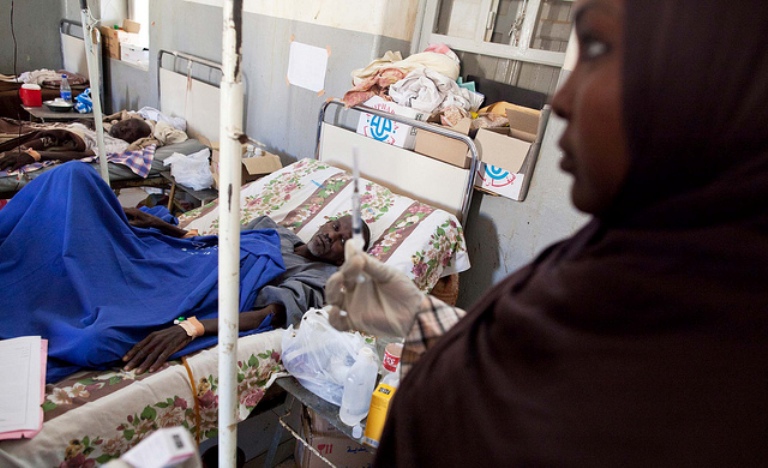Watery diarrhoea cases declined significantly in east Jebel Marra: minister

September 11, 2017 (KHARTOUM) – Sudan’s Minister of Health Bahar Idris Abu Garda Monday said the “Acute Watery Diarrhoea” (AWD) cases in east Jebel Marra area, South Darfur state have declined significantly, pointing that the daily average of incidents falls between 4 to 5 cases.
Last week, the government of South Darfur set up a high-level body to work alongside the state health ministry’s emergency committee to tackle the AWD that has hit large parts of the state.
On Saturday, Abu Garda arrived in South Darfur in an emergency visit to inspect the situation following the rise of AWD cases.
He told reporters on Monday that he inspected the situation on the ground, saying “the situation is reassuring and under control”.
The minister pointed out that the daily incidents cases have declined to 4 or 5 cases in most of the East Jebel Marra areas, saying he visited the Darabat and Liba areas to inspect the situation on the ground.
He stressed that all the required medicines that have been dispatched from Khartoum were received at Darabat and Liba, vowing to address any shortage of medical supplies immediately.
Abu Garda further commended the medical personnel for their work to tackle the disease in all areas around Jebel Marra including areas under the control of the rebel movements.
Dozens of people were killed, especially in the localities of East Jabel Marra, Ed al-Fursan, Katyla, Kass, and Bielel, as well as a number of neighbourhoods in Nyala, capital of South Darfur.
Sudanese health authorities refuse to declare a suspected outbreak of cholera an epidemic despite the death of 657 people and infection of 30762 others since August 2016 when it appeared in the Blue Nile state.
They insist that the disease is the Acute Watery Diarrhea.
In a joint report released last August, the Sudanese ministry of health and the World Health Organization (WHO) project additional 36,000 to 40,000 AWD cases over the next six to nine months.
(ST)
